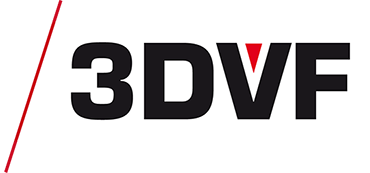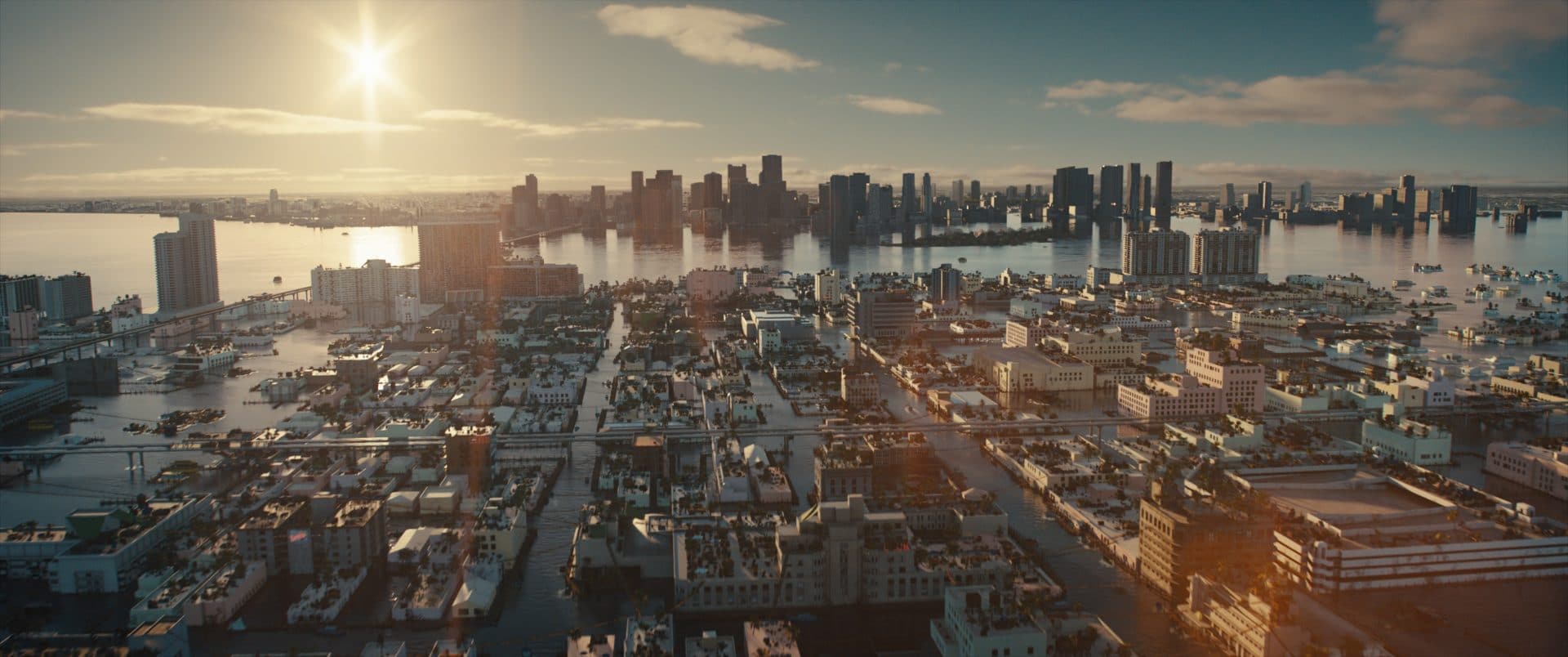This article is also available in:
French
Released in theaters on August 20th in the US and on HBO Max, Reminiscence is Lisa Joy’s first feature film as a director. She is best known for her work on Westworld. Reminiscence starrs Hugh Jackman, Rebecca Ferguson and Thandiwe Newton. Nick Bannister (Jackman), a private investigator of the mind, navigates the darkly alluring world of the past by helping his clients access lost memories. The story takes place in the near future. Due to the rise of the oceans, the skyline of Miami Beach is partly sumberged in the Atlantic.
RISE was in charge of many VFX-heavy shots, including the opening shots of the film: a jaw-dropping view of the sunken skyline of Miami lasting more than two minutes. To make it even more impressive, the sun is animated in timelapse.
RISE co-founder and executive VFX Producer Florian Gellinger worked as RISE VFX Supervisor for this film. He answered our questions and told us about the main technical and artistic challenges face by the team.
3DVF: RISE did an impressive job on Reminiscence: over 120 shots with lots of water (including a submerged Miami), eels, trains, digi doubles… Can you tell us about your collaboration with Lisa Joy and Production VFX Supervisor Bruce Jones?
Florian Gellinger-RISE: Bruce is an amazing collaborator – always in a good mood, always full of great suggestions that he follows up with matching references. He had already laid out a lot of the geography of the world together with Lisa, the director, and Howard Cummings, the production designer, before we started to build that world. Lisa Joy has great taste in architecture, (contemporary) art and was a great source of stylistic inspiration. As you can tell from her work on Westworld, she is very precise and knows how to turn a written page into something visually stunning that transports the mood of every page in the script.
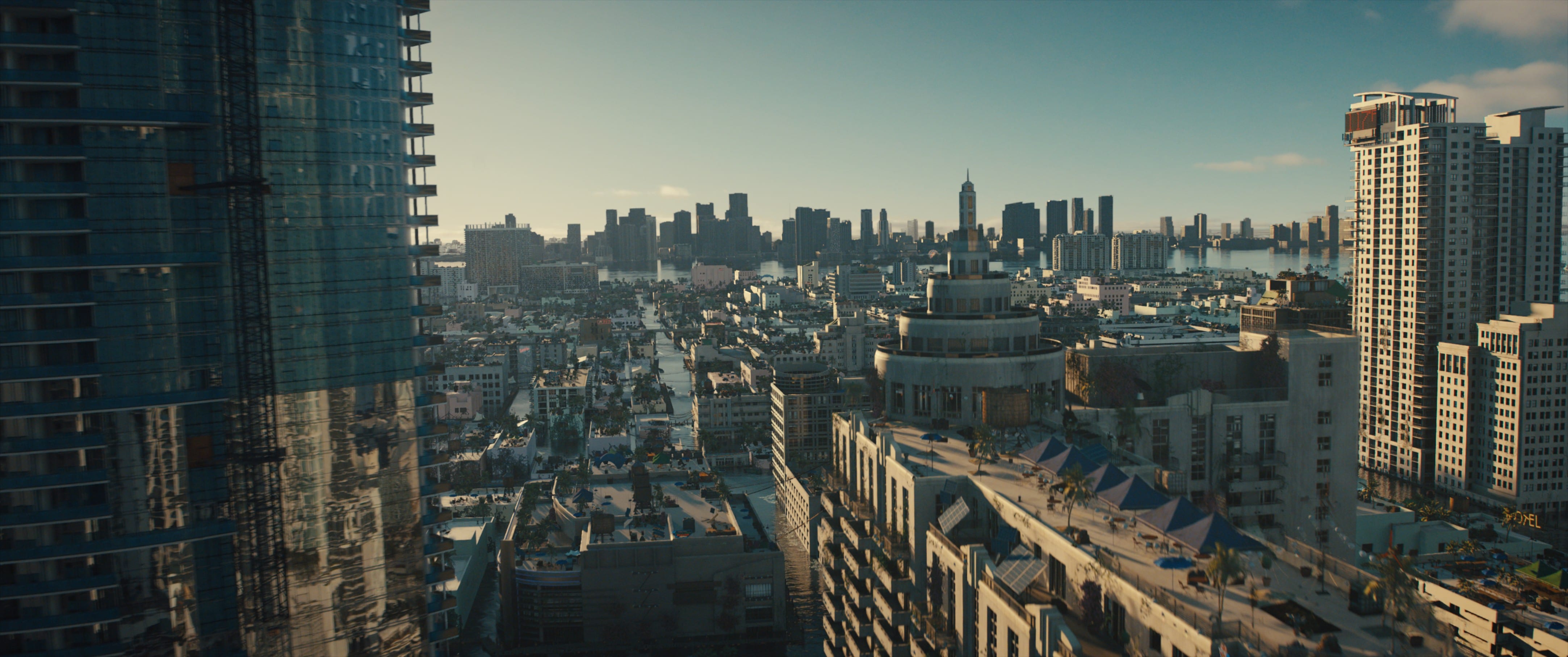
3DVF: What was the size of your team, and how long did RISE work on the show?
We started to work on Reminiscence just when Covid hit, in March 2020. The shoot fortunately wrapped just weeks earlier in February and we were busy moving almost all 120 people from our team within days to work from home with the help of our crazy good IT, pipeline and HR departments. We finished in October 2020, roughly after 8 months of production.
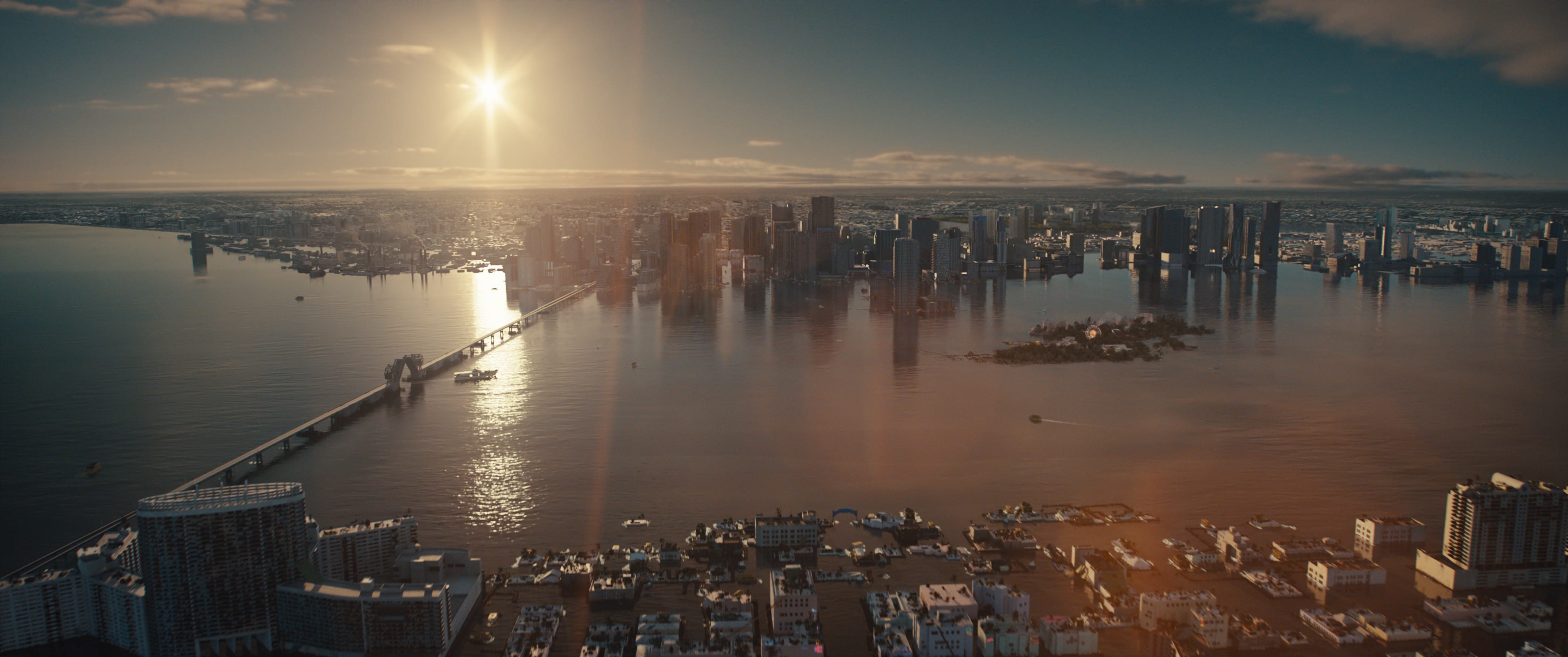
3DVF: Florian, you usually work as a VFX Producer, but you decided to act as RISE VFX Supervisor for this film. Why did you take this decision?
There was nobody else available. Just kidding. Most other shows were delayed due to Covid and shoots would only resume in August after careful risk evaluation. Some of our supervisors were busy on shows that were somewhat suspended but kept moving forward. I was assuming that Reminiscence would be relatively straight forward in the way we approach the environments – but I was wrong. So coming back to your question – I thought it would be easier for me to handle both instead of talking to a producer. In the end our superstar production manager Anne Barger helped me in checking paperwork and staying on top of bidding and production info.
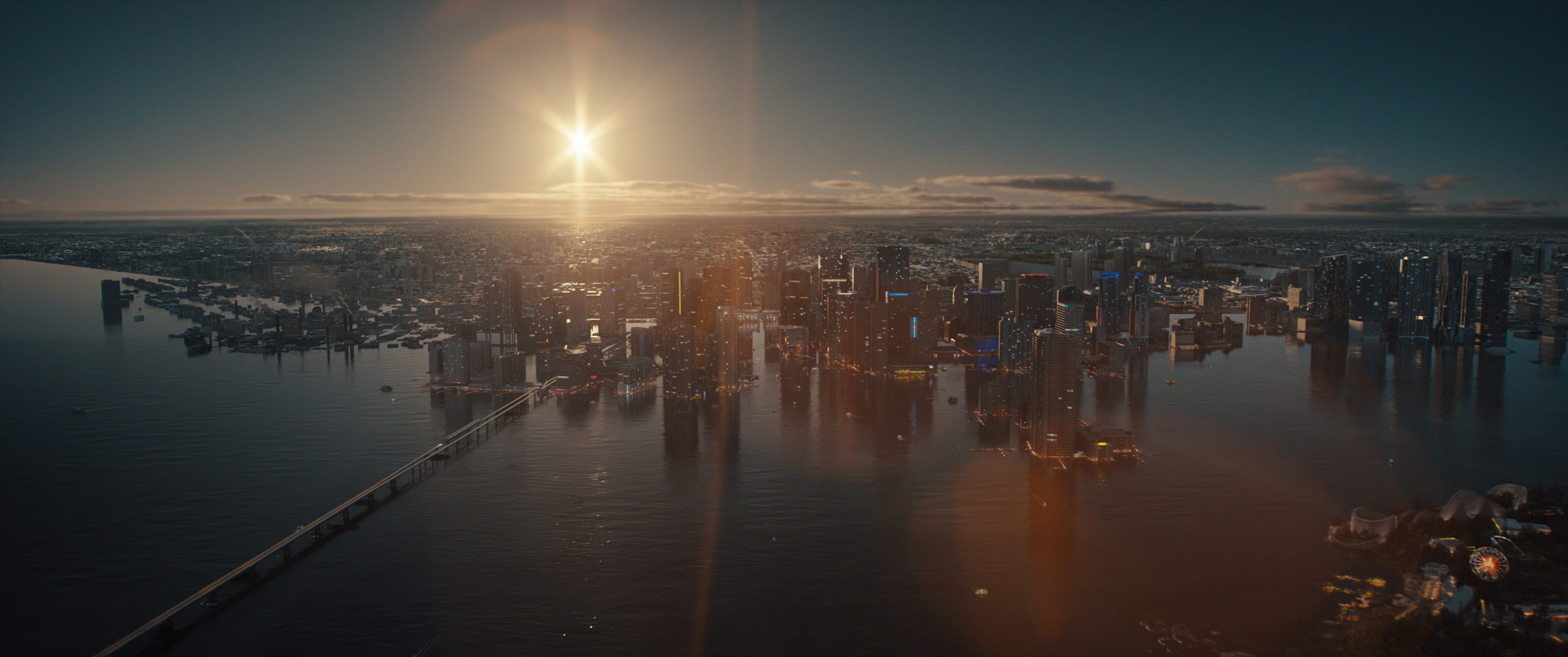
3DVF: The opening shot probably was the most challenging part of this project: 2 minutes and 16 seconds, full CG (until the camera arrives in front of Hugh Jackman), a whole city, ocean & water simulation. Last, but not least, the light changes since the sun is animated in time lapse. How did you approach such a huge task, from an artistic point of view?
We started looking at the street maps of Miami and Miami Beach, trying to categorize buildings into assets we could procedurally recreate and the ones we would need to build from scratch. For the procedural buildings our build lead Niklas Roth picked out the individual parts that we needed to be recreated. After we had the map populated with our hero assets and procedural buildings, we would start dressing procedurally by adding ACs, party tents, plants, day beds, suspended bridges between buildings and such to generate more visual variety. Our CG supervisor Matthias Winkler and FX supervisor Andreas Giesen lead their teams on subdividing the scene to make it more manageable and adding FLIP simulations for clashing waves against the buildings. The gigantic scene was maintained and updated by superstar Bernhard Esperester who also introduced cubical HDR maps for all apartment windows to be cropped matching the camera position to give the illusion of depth behind windows and curtains. Our animators added trains, boats, ships and sea gulls to make the city come alive, FX adding foam trails behind every moving water vehicle. Using Cryptomatte our swiss army knife compositor Michael Lankes turned on the lights in the buildings once the sun set and assembled the city with the help of hundreds of layers and IDs. Speaking of the time lapse time of day, we used a HDR sky dome and retimed it to taste. The CG sun was then animated to stick with the sun’s position in the HDR. In the second half of the shot the camera dives into the city over a dam holding back the Atlantic Ocean, into a street in Miami Brickell. We recreated the entire street location from the shoot in CG to have more control over the way the camera would slow down before it comes to a full stop on a playing card floating in the spill water in the street. The card is ultimately picked up by Bannister (Hugh Jackman) whos reflection in the CG water is obscured to keep the big reveal for when we tilt up. This part of the shot was assembled in comp by Jonathan Weber and Roy Hoes, re-integrating the extras we had to rotoscope and re-project to play in realtime while the camera is still travelling much faster. I can’t say how many artists contributed to this one shot – but everyone on our team must have built something for it along the way. Most challenging about this shot and it’s length was that there was no way to cheat. You could almost see the end of the shot on the first couple of frames. There was nothing wiping through frame letting us cut to another rendering. The FLIP simulations for water had to be over 1000 frames long because that’s how long they were in frame.
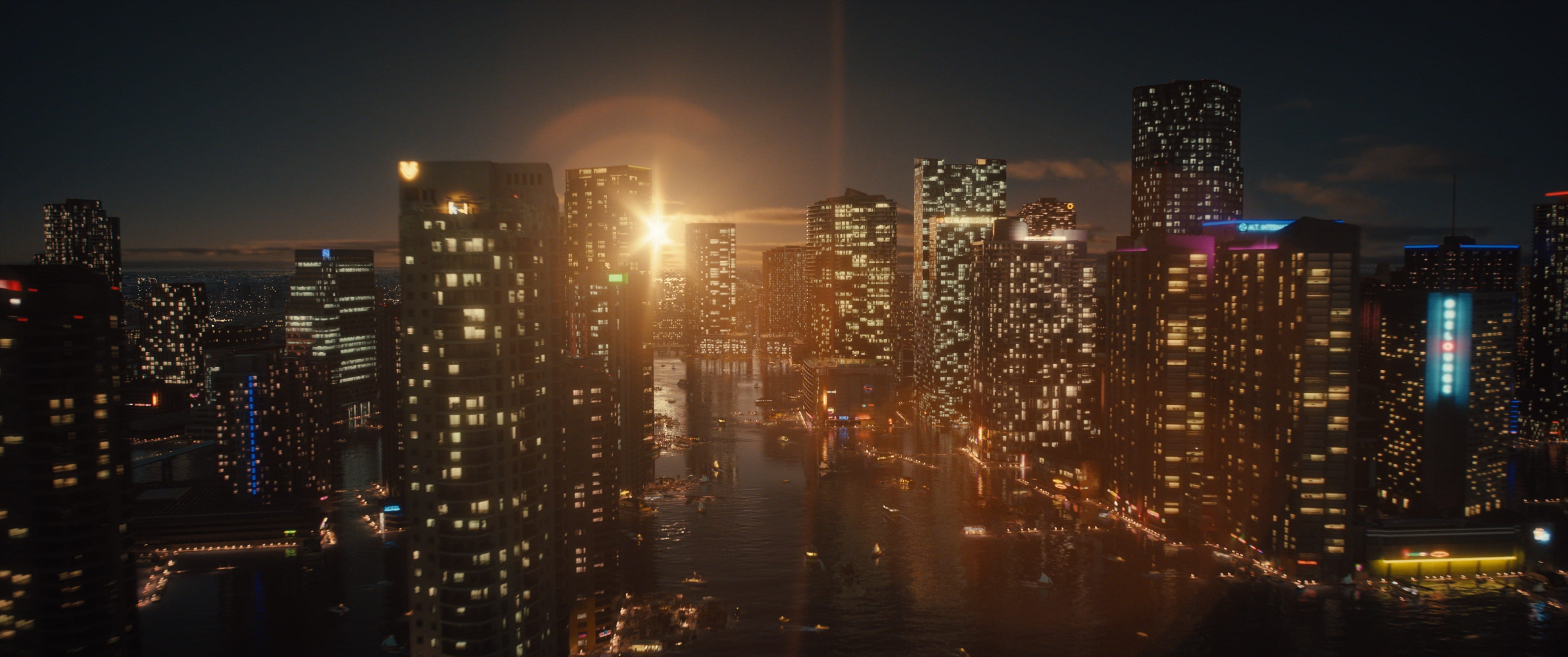
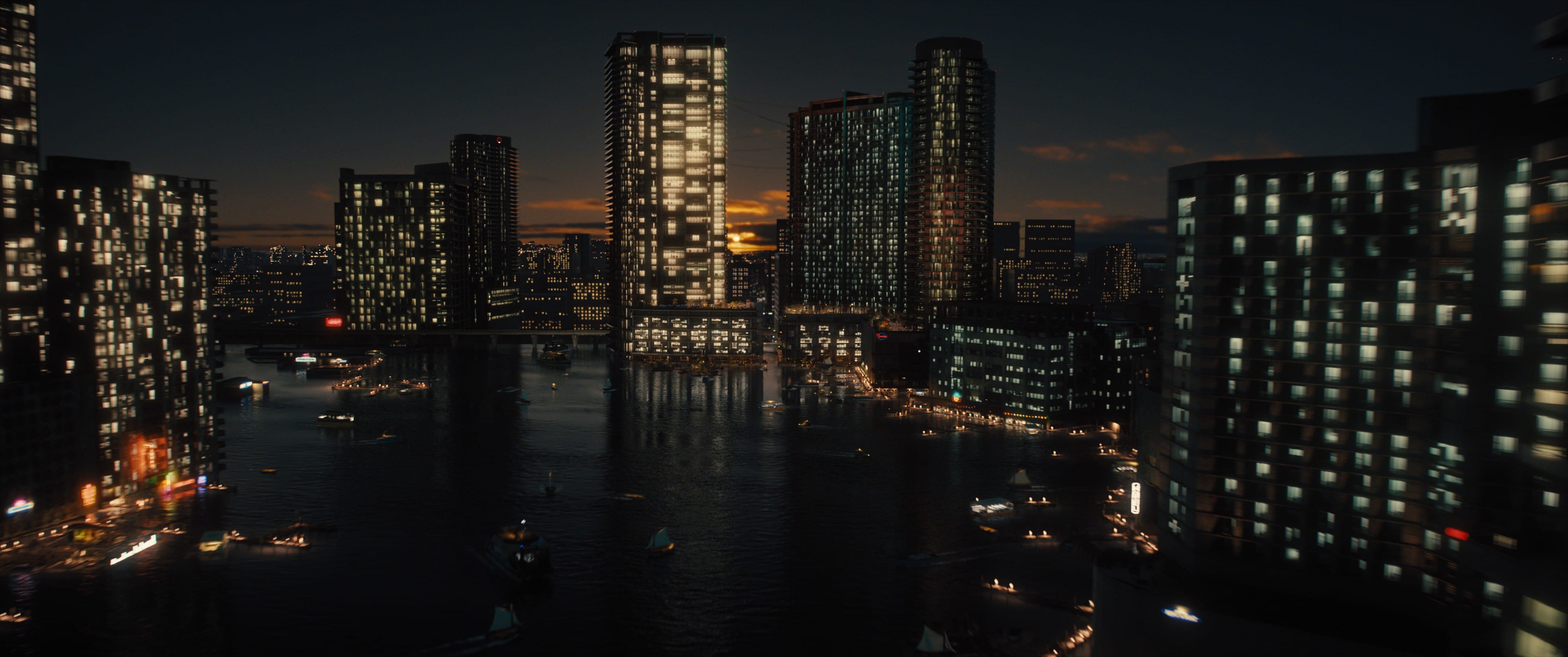
3DVF: Was it hard to create the timelapse effect? Not only did you have to tweak the sky, you also had to handle city lights & traffic.
Since the timelapse was only affecting the time of day, the rest of the scene moving in realtime, we only had to deal with VERY dynamic lighting and artificial lighting coming into play as the sun disappears. This also has implications on exposure levels in compositing since 4pm in the afternoon is not recorded the same way by a physical camera as 7pm in the evening. Timelapse people and vehicles would have taken away some of the elegance and majesty of the shot, making it more staccato. So going realtime with everything moving was a conscience artistic choice.
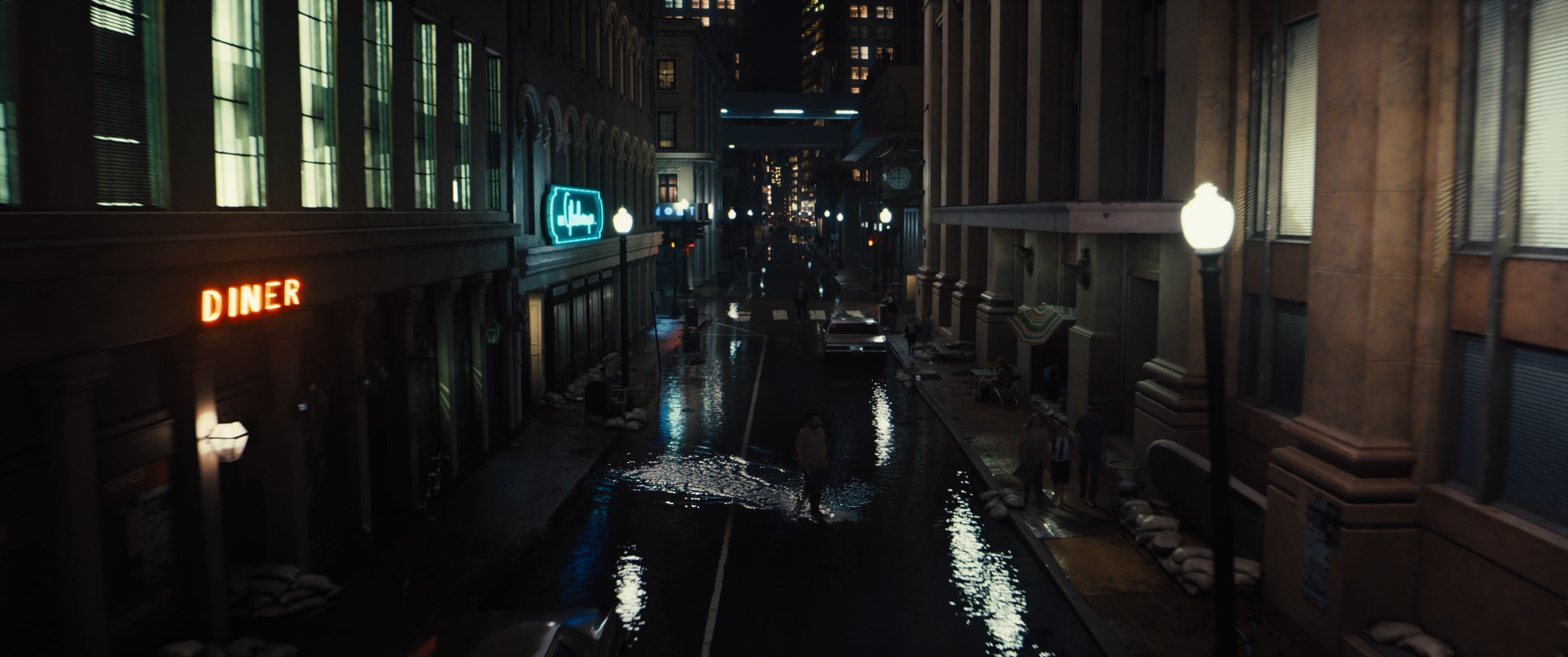
3DVF: Can you walk us through the technical issues related to the opening shot ? Water sims & cache issues were probably quite tricky to handle?
Yes, the length and looking along a single axis was definitely giving us a couple of headaches. Seeing everything that is about to fly by close to camera starting on frame 300 and then continuing on screen for another 1000 frames or so made this shot so difficult. Usually you’d have a cloud wiping through frame, a building, a bird or something to quickly obscure the view. But here we had to add buildings and water that would hold up while flying by even when they were still far away.
Memory management was essentially half the job and subdividing the building blocks to become more manageable. In CG geometry is no longer an issue.
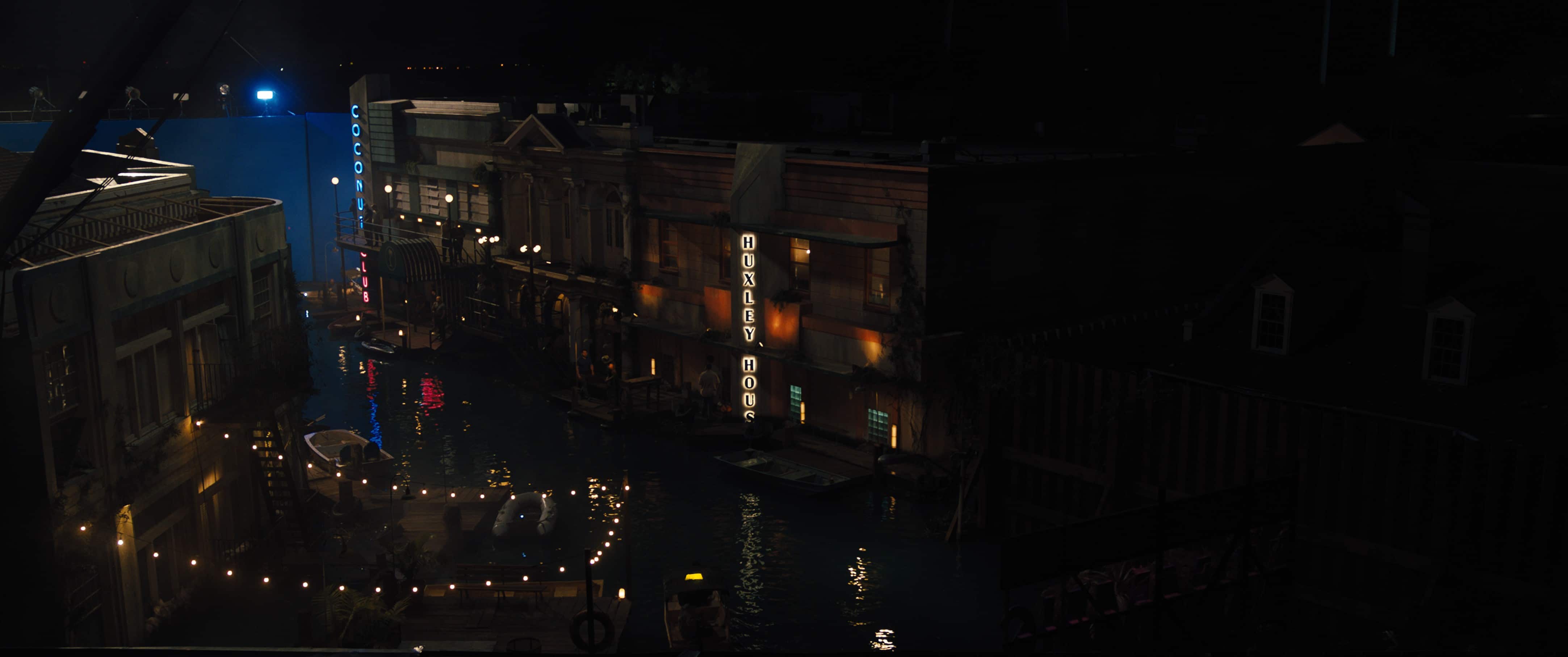

Since everyone is working with heavily tessellated meshes out of Z-Brush and LiDAR scans, this is nothing new. But if you add reflections, simulation cashes and a couple of thousand lights – this is becoming an issue.
Next Page: eels, stunt doubles, Covid and future tech.
